Tuesday Tips–I’ve always liked weaving “post and rail” chair seats, ones that have rungs on them because the materials and weaving patterns to choose from are practically limitless. Here’s just a small sampling of some of the different ways you can treat these marvelous chair seats when you restore them.
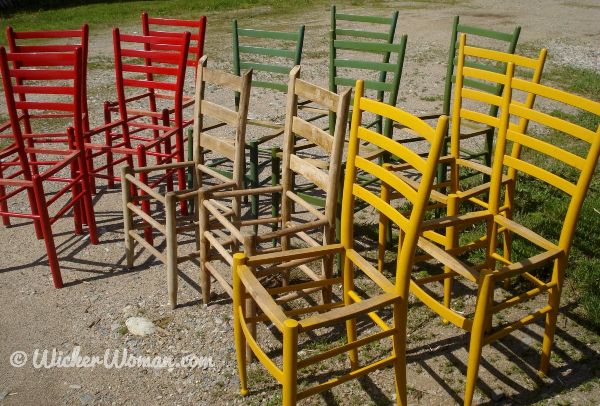
Many of the chair frames will be best suited to a particular weaving material and design, but many are interchangeable. For example, the hickory chair below with its rattan reed splint seat, could just as easily been woven with ash or hickory bark splints, too.
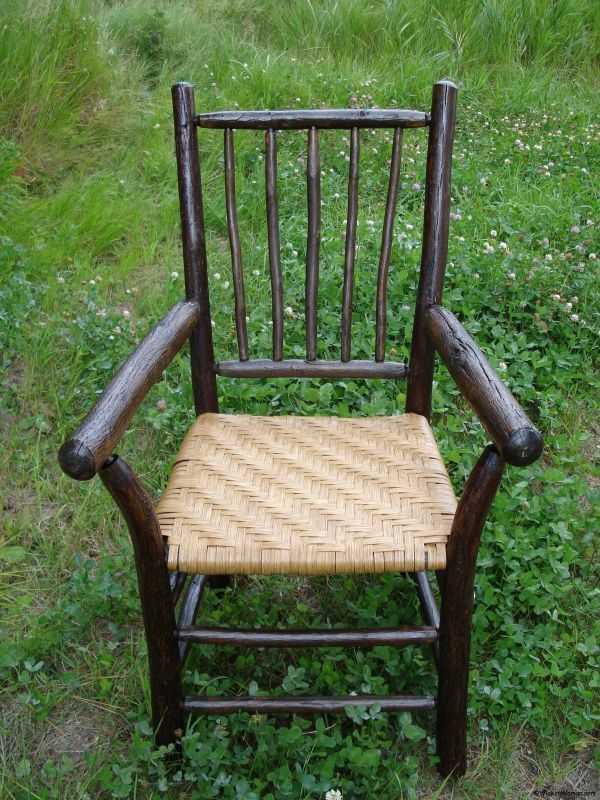
This mule-ear Southern settin’ chair was woven using Oriental seagrass in a checkerboard pattern but could just as easily been woven with either hickory bark splints, oak splints, or a wide binding cane in a herringbone pattern.
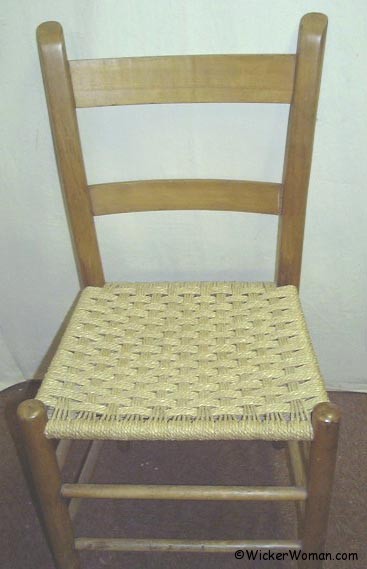
Here are two chair seats, each woven in the typical and traditional rush weaving pattern but using two different materials: hand-twisted cattail leaf rush and man-made pre-twisted paper fibre rope.
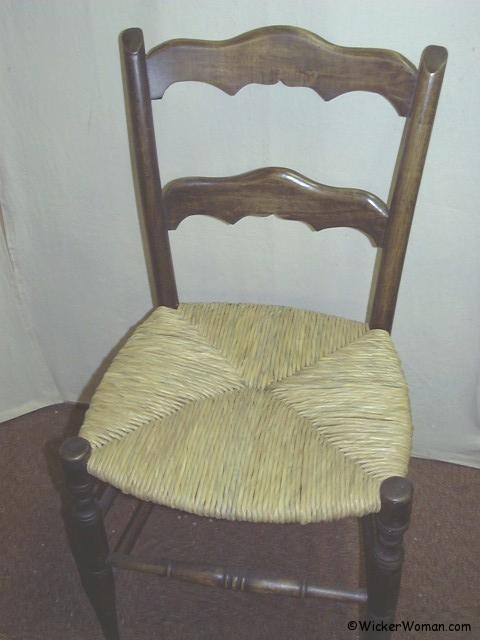
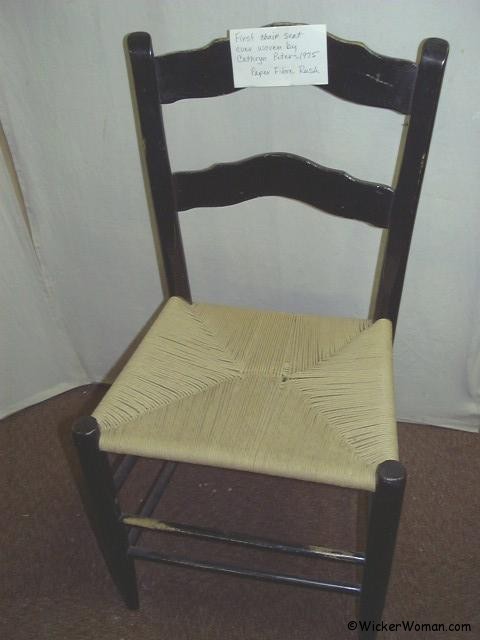
Or you could weave that trapezoidal (wider in the front than in the back) chair seat, in cotton Shaker tape instead.
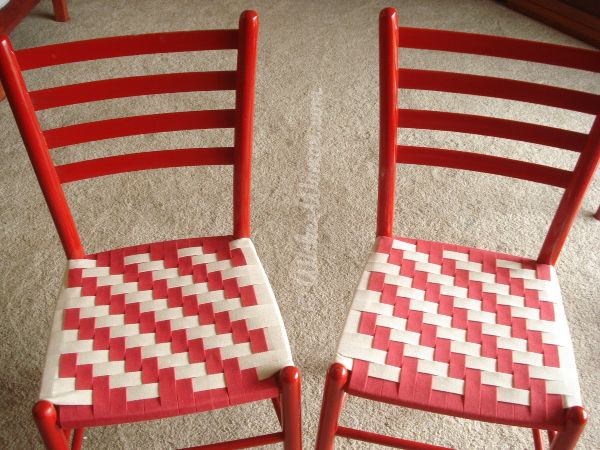
The weaving pattern is in a checkerboard pattern most of the time, but can also be altered using herringbone patterns and diamonds. And believe me; you’ll be hard-pressed to choose the colors of cotton or wool tapes because they are endless.
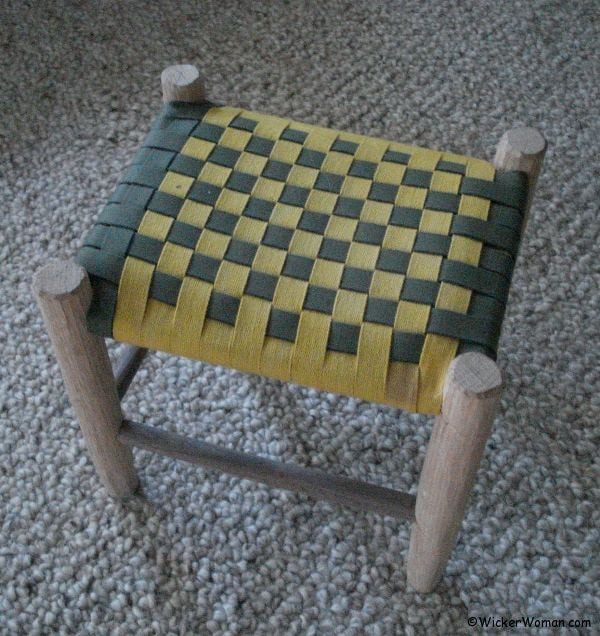
Of course, many, many other designs, patterns, and materials can be used on post-and-rail chair frames; we’ve just scratched the surface here with these few examples. And as you’ve seen they don’t all have to be trapezoidal in shape, either.
The stools, chairs or rockers can also be square, rectangular and even triangular, believe it or not! The sky’s the limit, so experiment around a bit when you reweave your chair seat and if you take your chair to a repair person, be sure to ask them what the possibilities are.
What has your experience been with using different materials on different styles of post-and-rail chairs? Please leave your comments below and share them with me and the readers of this blog.

What are your thoughts about this blog post?
Leave your comments below and share with your social networks!
~~Live Well, Laugh Often, Love Much ~~
Happy Weaving, until next time!



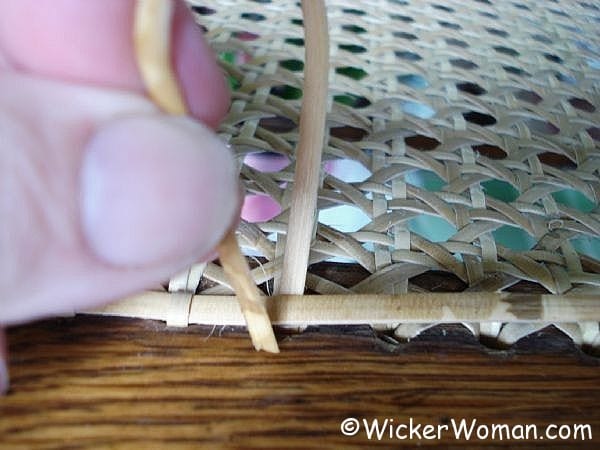

Hi Cathryn, great inspiration! I just had a chair dropped off that needs a new rush seat so I have to shift my brain in to seat weaving gear.
Well thank you Shari, glad I could help out. Just so you know, your blog is a great inspiration to me too! Love going there just to see all the new pictures, if nothing else! And when you post here again next time, be sure to also include your blog addy in your signature file at the bottom of the post so everyone will go visit! https://redtwigbrowntwig.blogspot.com
I have finished another rawhide woven,
mule eared chair. I would like you see a photo of my work.
That’s wonderful Kathleen! You can send a photo to me at [email protected] and be sure and post it on your Facebook profile album and on The SeatWeavers’ Guild, Inc. Facebook Page and on my Facebook Page too. Here are the links; https://www.facebook.com/thewickerwoman https://www.facebook.com/theseatweaversguild
Hi Cathryn,
One of my students did a porch weave in 4MM binder cane instead of the “usual” 5 0r 6 MM. It was beautiful!
Somehow looked extra special with the smaller cane.
Another student wanted an open weave and we left a width of the same width as the flat reed that was used. I think it was 1/2 inch flat, and there was a 1/2 inch space between each wrap. It was really neat !
Thanks for commenting here Jan, love to hear what you and your students have been up to!
Yes, I’ve seen the porch caning done in the 4MM binding cane too, and you’re right it is pretty, but takes forever to weave when you are used to doing it in the 6MM!
And do you have pictures by chance of those flat reed seats that you could post on my Facebook Page as well as on The SeatWeavers’ Guild Facebook Page so we can all see them?
Here are the links to the FB Pages:
https://www.facebook.com/thewickerwoman
https://www.facebook.com/theseatweaversguild